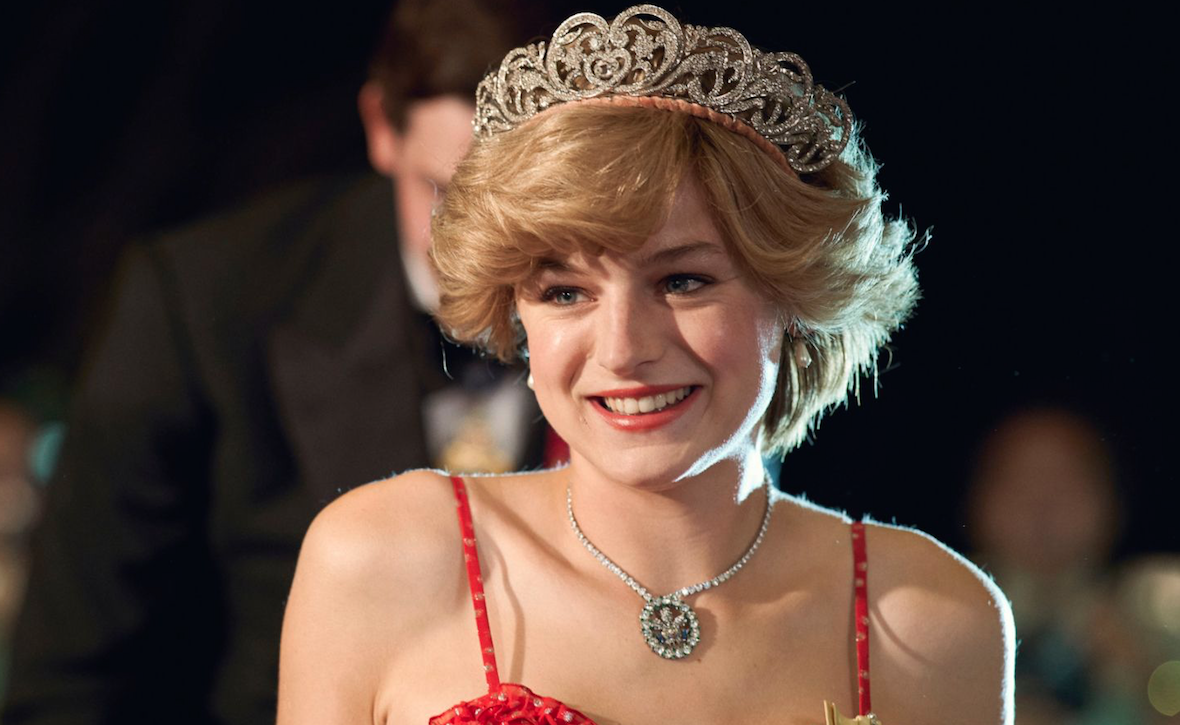
The new season of Netflix’s “The Crown” — a dramatic retelling of the rule of Britain’s longest reigning monarch, Queen Elizabeth II — drummed up attention because the new episodes would feature two women who loom larger in British culture than Big Ben: Princess Diana and former Prime Minister Margaret Thatcher. This show is inherently about women — well, one woman — in power, and season four is its most female-focused yet.
Princess Diana was married to Prince Charles, who is first in line to inherit the throne upon Queen Elizabeth’s death. They divorced a few years before her death in 1997. This season of the show depicts the early years of their relationship, but it ends before the formal dissolution of their marriage.
It seems as if every female character — and even a few of the men — envies Diana.
The normally pragmatic Princess Anne complains that the press ignores her charity work to rhapsodize about Diana. Camilla, Prince Charles’ mistress, tells Charles she cannot be with him openly, even if he gets divorced, because she wouldn’t be able to handle the comparisons to Diana. Even Queen Elizabeth herself is susceptible to the green menace, insisting that her reception in Australia exceeded Diana’s, despite numerous characters suggesting otherwise.
In the first episode of the season, Gillian Anderson’s Margaret Thatcher — the first female prime minister in British history — laughs at the possibility of including other women in her cabinet. She claims, in Thatcher’s infamous, Voldemort-like rasp, that women are too emotional to handle the responsibility. The cognitive dissonance is startling. As a woman herself, Thatcher doesn’t view her success as proof that women can hold high office. She sees herself as the exception rather than the rule.
“The Crown” makes you sympathize with Thatcher for the exact reason you loathe her: She’s a victim of the patriarchy but reinforces it. Thatcher insists that a woman must unpack her husband’s suitcase; she disparages her daughter and her mother for their lack of “strength”; she makes dinner and serves it to her advisors because she may be their superior but she is a woman first. She is frustrating, but she is also pitiful.
Limiting opportunities for women inhibits female inclusion and inspires toxic competition — when you’re used to being the only woman in a room, other women inherently pose a threat. The prime minister won’t allow other women into her government because it endangers her position. Thatcher also presents a unique threat to the queen because before the Thatcher years, Queen Elizabeth was the nation’s sole female touchstone. It is no wonder that she grows paranoid of becoming defunct under the Iron Lady’s iron fist.
The same issue underscores the jealousy over Diana. The women of the royal family cannot bear to share the spotlight, especially with an outsider who so dramatically overshadows them, even though all Diana seems to want is their appreciation.
Diana, the alleged winner of this unspoken competition, is shown to struggle most of all. She lost out on her youth, locked in an ostensibly loveless marriage with two children by the time she’s 23. Her husband, Prince Charles — who was 31 to Diana’s 18 when they first started dating — remains infatuated with an ex.
A lonely, desperate Diana makes several fruitless efforts to connect with her in-laws — in one instance, literally reaching out in a painful-to-watch, unreciprocated hug with the queen — but she falls through the cracks of their insistent distance. The royal family dismantled her mental state, and her physical body broke down as well. Diana’s envied wardrobe hid a vicious eating disorder that left her just skin and bones.
The only way to eliminate this sense of competition is to create more space for women. If women can expect equal representation, they won’t tear each other apart for the scraps. This would have been easy for Thatcher, who could have allowed more women into her cabinet. However, a monarchy, by definition, means only one person can rule. The queen cannot share her authority, so a more equitable royal family can never be achieved.
But Diana’s power struggle has nothing to do with politics. The press was responsible for Diana’s rise — and later for her fall. As long as the patriarchy frames popular narratives, it will continue to pit women against one another. This is a deliberate tactic. Dividing women prevents them from banding together to overthrow the patriarchal system responsible for their oppression.
In the season finale, Queen Elizabeth awards Thatcher with the Order of Merit. While this may seem like a step toward utopian sisterhood, this moment of reconciliation only comes after Thatcher loses the prime ministry. In other words, once she is no longer a threat to the queen’s power. Several scenes later, the queen continues to brush off Diana, who is distraught over her crumbling marriage. She is still jealous of Diana, the public’s perfect princess.
Love cannot exist when the scales of power are tipped. Throughout the show, Queen Elizabeth has struggled to show affection because she lives in a system in which her family poses a constant threat to her authority. The queen is unable to appreciate Margaret Thatcher until she’s out of power, and she fails to support Diana because the public prefers the young princess over their monarch. The first three seasons of “The Crown” examine one woman’s rise to power, but season four highlights the toxic repercussions when you limit that space to one.
Jordan Fitzgerald | jordan.fitzgerald@yale.edu
"heavy" - Google News
November 20, 2020 at 09:14AM
https://ift.tt/2ITAr3W
Heavy is the Head that Wears the Tiara - Yale Daily News
"heavy" - Google News
https://ift.tt/35FbxvS
https://ift.tt/3c3RoCk
heavy
Bagikan Berita Ini















0 Response to "Heavy is the Head that Wears the Tiara - Yale Daily News"
Post a Comment